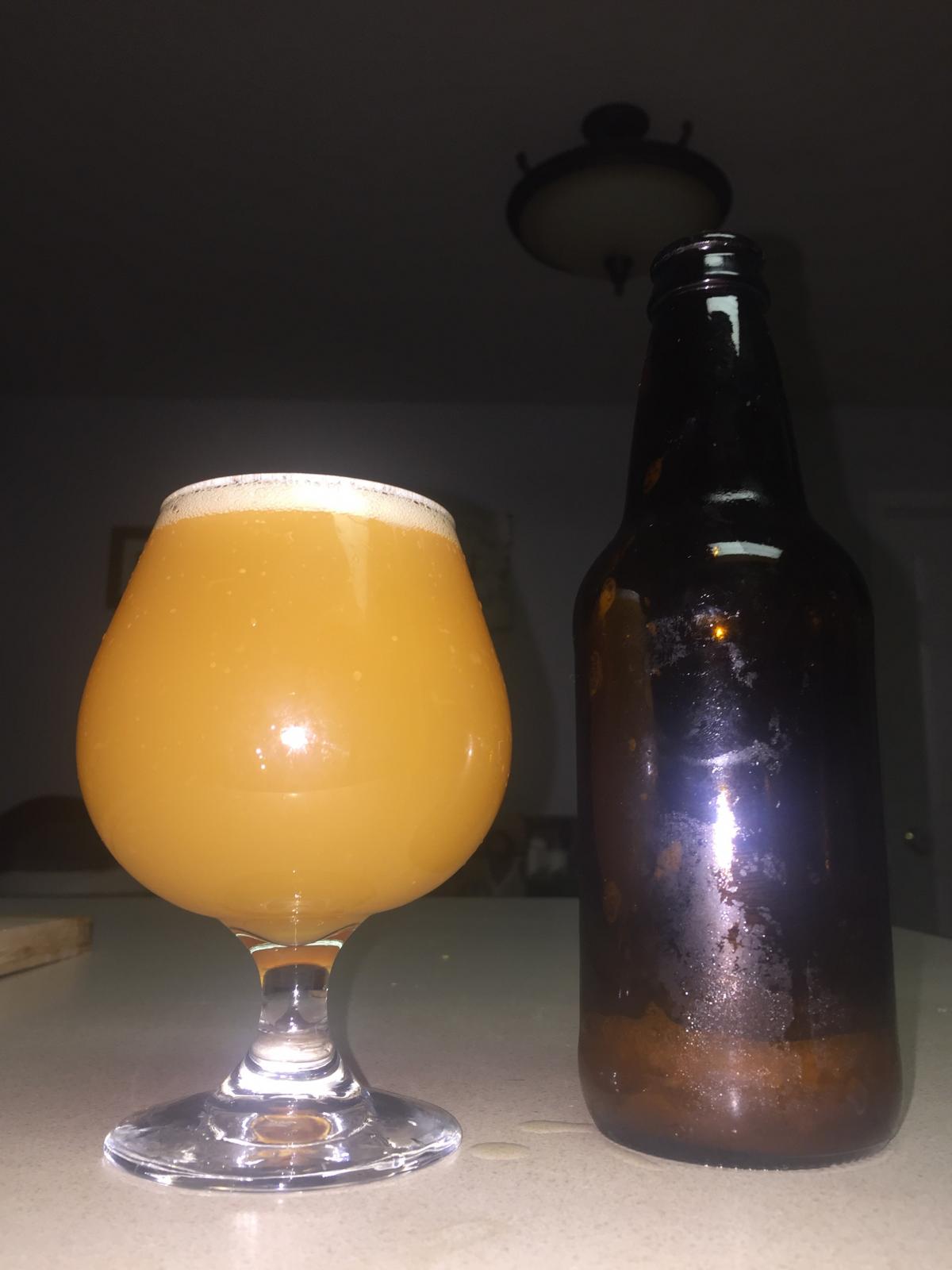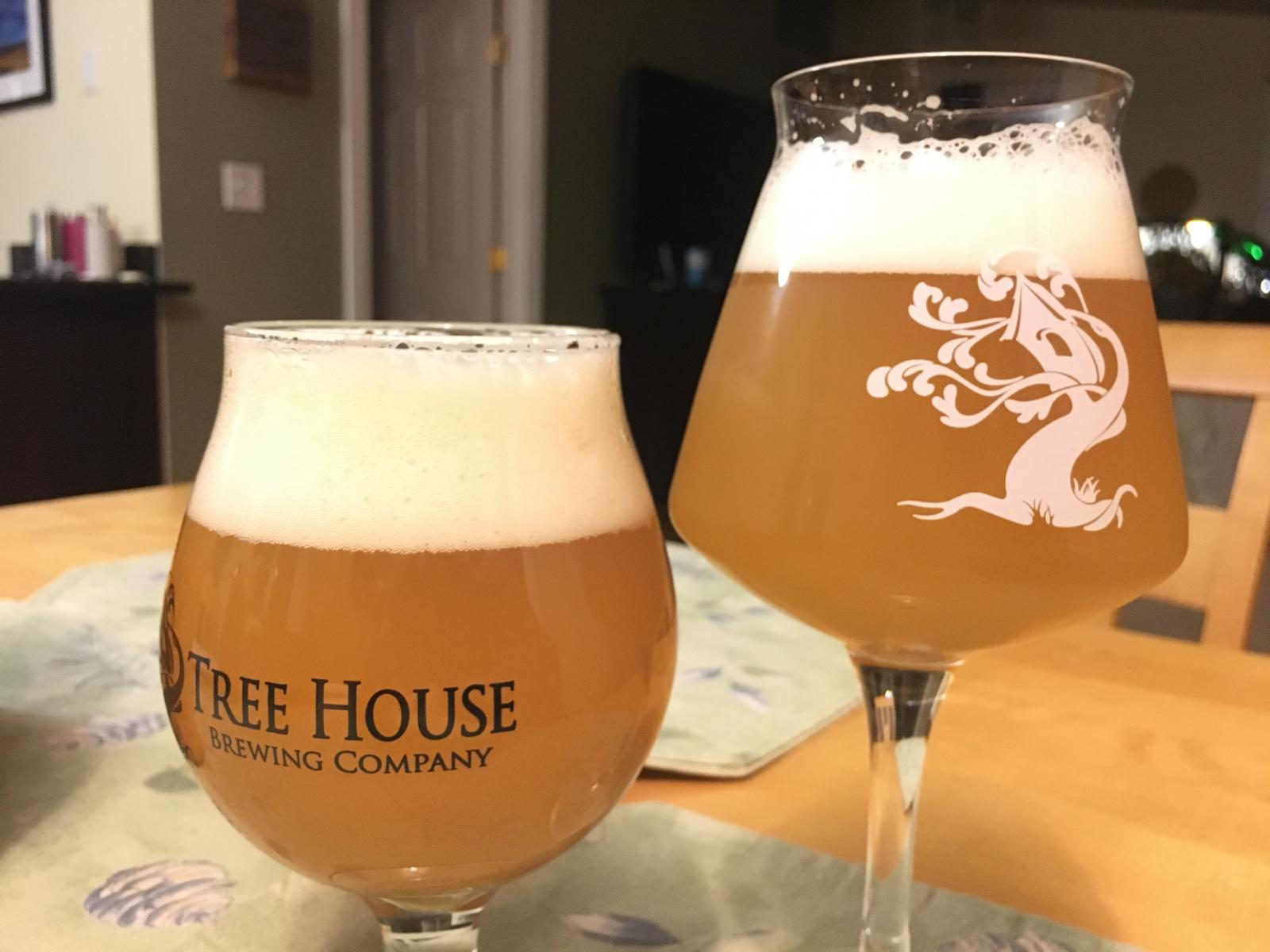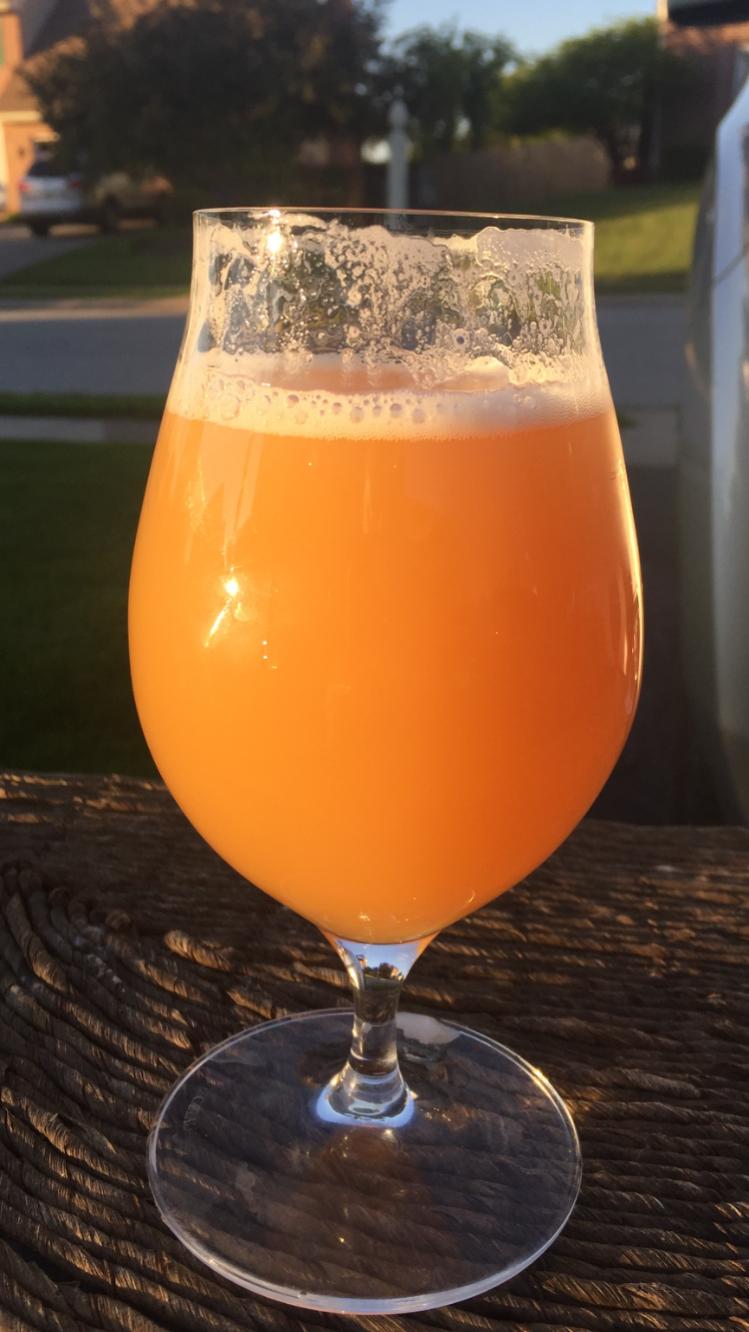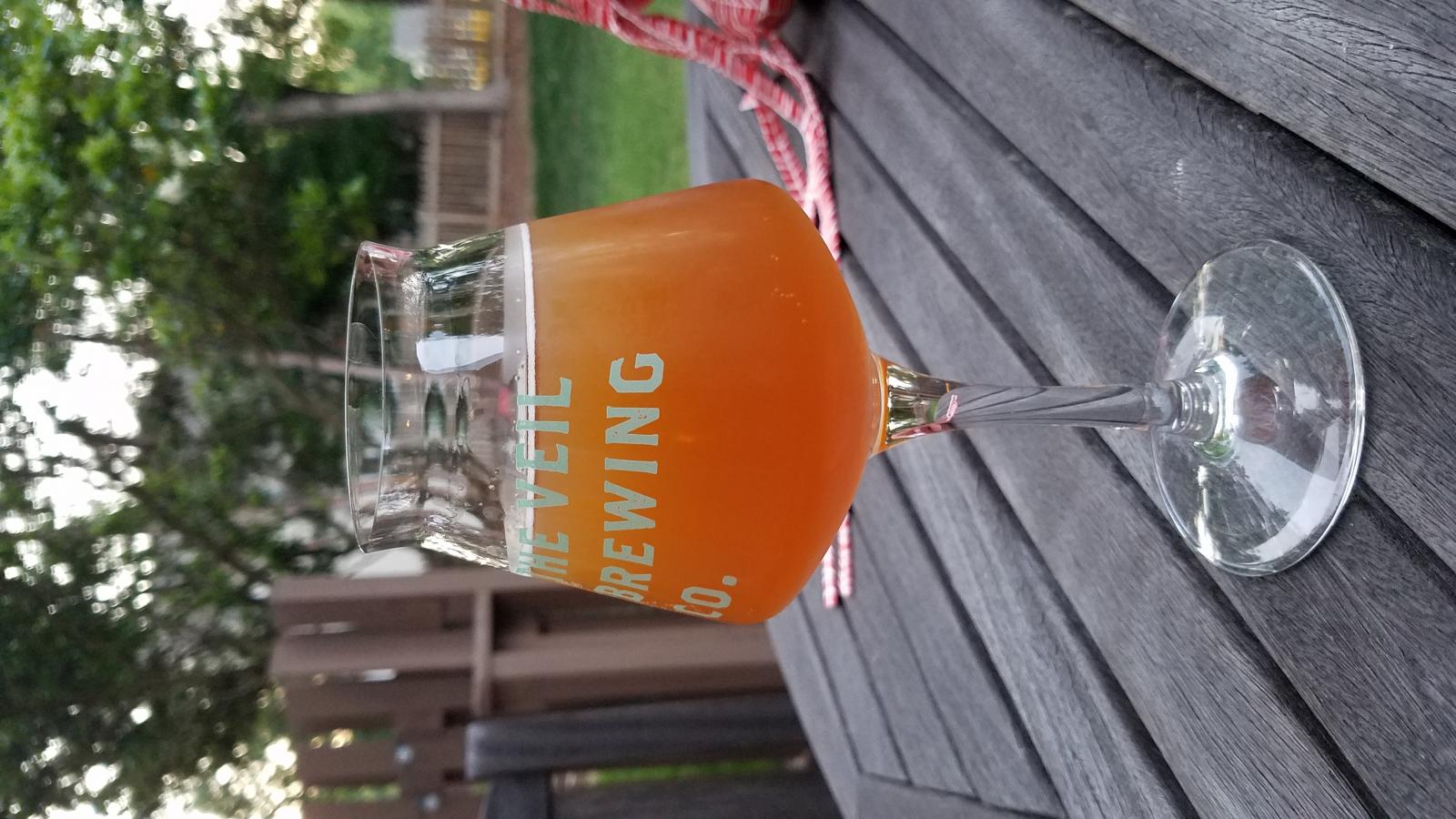BASSBBQANDBEER
Active Member
- Joined
- Mar 10, 2016
- Messages
- 32
- Reaction score
- 6
What a great thread!
I'll be giving Cavpilot2000's recipe a shot this weekend with a few changes. Thank you in advance for sharing your recipe. I've had a lot of luck with the Trillium Vicinity Clone recipe that's been circulating on these boards (with a few minor changes as well) so this outstanding.
All Grain 5 Gallon Treehouse (inspired) NE IPA
ABV: 6.8
Water
Water: 9.1 Gallons
Target Mash Temp: 152F
Mash Water: 4.41 gal.
Sparge Water: 4.68 gal.
Strike Temp: 164.33F
Cooler Strike Temp: 175F
Pre-Boil Wort Produced: 6.37 gal
Grains
8 lb 2-Row Pale Malt (56.1%)
3 lb Vienna Malt (21.1%)
1 lb Flaked Wheat (7%)
1 lb Flaked Oats (7%)
1 lb Honey (7%)
4 oz Honey Malt (1.8%)
Mash 60 mins @ 152F
Hops
1 oz Simcoe - 15 min boil
1 oz Citra- 5 min boil
1 oz Mosaic - 0 min flameout
1 oz Columbus - 0 min flameout
1 oz Citra day 3 dry hop
1 oz Galaxy day 3 dry hop
2 oz Citra day 6 dry hop
2 oz Galaxy day 6 dry hop
Yeast
Yeast: Vermont Ale — The Yeast Bay
Yeast Starter + Stir Plate - 24 hours (stir plate), 12 hours refrigerated before decanting.
1 liter, 4.22 cups water + 6 oz DME
Additions
1 Teaspoon Yeast Nutrients @ 10 min (Boil)
2 Teaspoons of Calcium Chloride (Mash)
Primary Fermentation: 7-10 days @ 68F
Cheers!
I'll be giving Cavpilot2000's recipe a shot this weekend with a few changes. Thank you in advance for sharing your recipe. I've had a lot of luck with the Trillium Vicinity Clone recipe that's been circulating on these boards (with a few minor changes as well) so this outstanding.
All Grain 5 Gallon Treehouse (inspired) NE IPA
ABV: 6.8
Water
Water: 9.1 Gallons
Target Mash Temp: 152F
Mash Water: 4.41 gal.
Sparge Water: 4.68 gal.
Strike Temp: 164.33F
Cooler Strike Temp: 175F
Pre-Boil Wort Produced: 6.37 gal
Grains
8 lb 2-Row Pale Malt (56.1%)
3 lb Vienna Malt (21.1%)
1 lb Flaked Wheat (7%)
1 lb Flaked Oats (7%)
1 lb Honey (7%)
4 oz Honey Malt (1.8%)
Mash 60 mins @ 152F
Hops
1 oz Simcoe - 15 min boil
1 oz Citra- 5 min boil
1 oz Mosaic - 0 min flameout
1 oz Columbus - 0 min flameout
1 oz Citra day 3 dry hop
1 oz Galaxy day 3 dry hop
2 oz Citra day 6 dry hop
2 oz Galaxy day 6 dry hop
Yeast
Yeast: Vermont Ale — The Yeast Bay
Yeast Starter + Stir Plate - 24 hours (stir plate), 12 hours refrigerated before decanting.
1 liter, 4.22 cups water + 6 oz DME
Additions
1 Teaspoon Yeast Nutrients @ 10 min (Boil)
2 Teaspoons of Calcium Chloride (Mash)
Primary Fermentation: 7-10 days @ 68F
Cheers!
























































![Craft A Brew - Safale BE-256 Yeast - Fermentis - Belgian Ale Dry Yeast - For Belgian & Strong Ales - Ingredients for Home Brewing - Beer Making Supplies - [3 Pack]](https://m.media-amazon.com/images/I/51bcKEwQmWL._SL500_.jpg)





